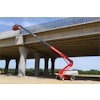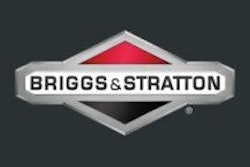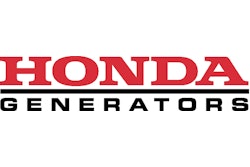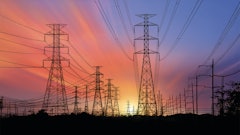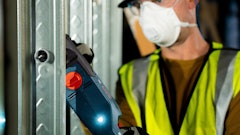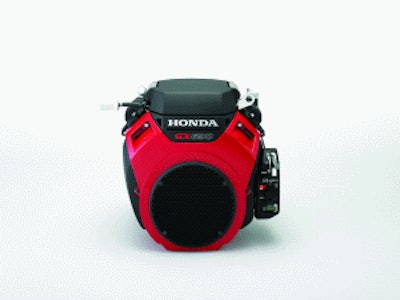
With Tier IV standards for diesel engines going into effect this January, there's no shortage of news about that technology. But what about your gasoline engines? What's new there?
We asked a couple of leading manufacturers to tell us what trends they're seeing in gas engines, as well as what's coming in the future.
It's about efficiency
Everyone wants to get their job done efficiently and cost-effectively. "Gasoline engines that can increase fuel efficiency, reduce lifetime cost of ownership while offering excellent reliability are of high interest to consumers in the rental market and other high-use markets," says Mike Rudolph, senior manager for Honda Engines.
Engine manufacturers have had to work very hard over the past several years to meet the demands of OEMs. "They continue to ask more and more from the engine, and not just in terms of power," says Dan Roche, marketing manager at Briggs & Stratton. "The equipment we power varies greatly in terms of specifications and performance needs. To answer these needs, we create application-specific feature sets that allow the engine to take on a range of performance attributes from the same basic platform."
He continues, "An example would be the Vanguard Marine Package that allows our Big Block engines the flexibility to run at very low RPM while simultaneously providing enough alternator current to satisfy power needs, and do so while surviving in saltwater conditions."
Rental businesses demand uptime from the equipment they own. Their customers also want to work as efficiently as possible, and the engine can bring a lot to the overall package. "Again, it comes down to the features and performance characteristics," says Roche. "It also comes down to a positive, collaborative working relationship between the OEM and engine maker.
"Briggs offers free access to the Engine Application Centers (EAC-North America and EACE-Europe) to facilitate the process. Here, a team of application engineers work with the OEM product managers to ensure the marriage between engine and end product is a long, happy one. And with many OEMs scaling back on their own R&D staffs, business is booming at the EACs."
Emissions a top concern
"We're hearing from more consumers and end users that wish to reduce their environmental impact," says Rudolph at Honda. "We're searching for engine products that meet stringent emission regulations for all 50 states (CARB compliant), and making CARB regulations paramount to the engine development process."
Roche agrees that with both evaporative and exhaust emissions requirements tightening, it's required engine makers to devote a significant amount of resources toward meeting "table stakes" and being able to serve the market. "Briggs & Stratton remains committed to environmental stewardship and reducing our environmental footprint on a global basis," he says. "This effort has helped us reduce the emissions from our engines by 75% since 1995."
State of the art
Last year, Briggs & Stratton introduced the new Vanguard Single Cylinders with TransportGuard System. "The TransportGuard system removes the costly result of human error," says Roche. "Most engines on rental equipment have two shut-off switches. One for the fuel flow, another for the electrical circuit. Either one can shut off the engine, but if rental customers only use the electrical shut-off, fuel can flow during transport from carburetor into the engine cylinder. When this happens, the rental owner needs to service the engine prior to the next rental. The TransportGuard system integrates both switches into one red lever. Human error is eliminated. Costly and time-consuming repairs are a thing of the past."
He continues, "The Idle Down feature on the Vanguard V-Twins helps reduce jobsite noise and fuel consumption. An electrical circuit tells the engine to slow down and go to idle when the equipment senses it does not require full power. As soon as the demand for power is communicated, the engine ramps up speed to meet the demand."
For its part, Honda's two most recent engine launches (Honda V-Twin Engine Series and Large GX Engine Series) include general purpose engines that feature tangible increases in fuel efficiency, Rudolph says. "Specifically, in the case of the V-Twin engine, this reduction in fuel consumption is accomplished through the advanced combustion chamber design and implementation of Digital Capacitive Discharge Ignition (CDI) with variable ignition timing, and twin barrel inner-vent carburetion," he explains.
The latest advancements in gas engine technology offer countless benefits to rental businesses, both in terms of direct costs and those passed on to customers.
"The most recognizable benefit that a rental business may realize from the use of engines with improved fuel efficiencies and lower costs of ownership is a reduction in fuel expense for end users, and a reduction in product downtime and costly repair expenses," says Rudolph. "These reductions can truly save a considerable amount of money - savings that go directly to the rental business' bottom line."


